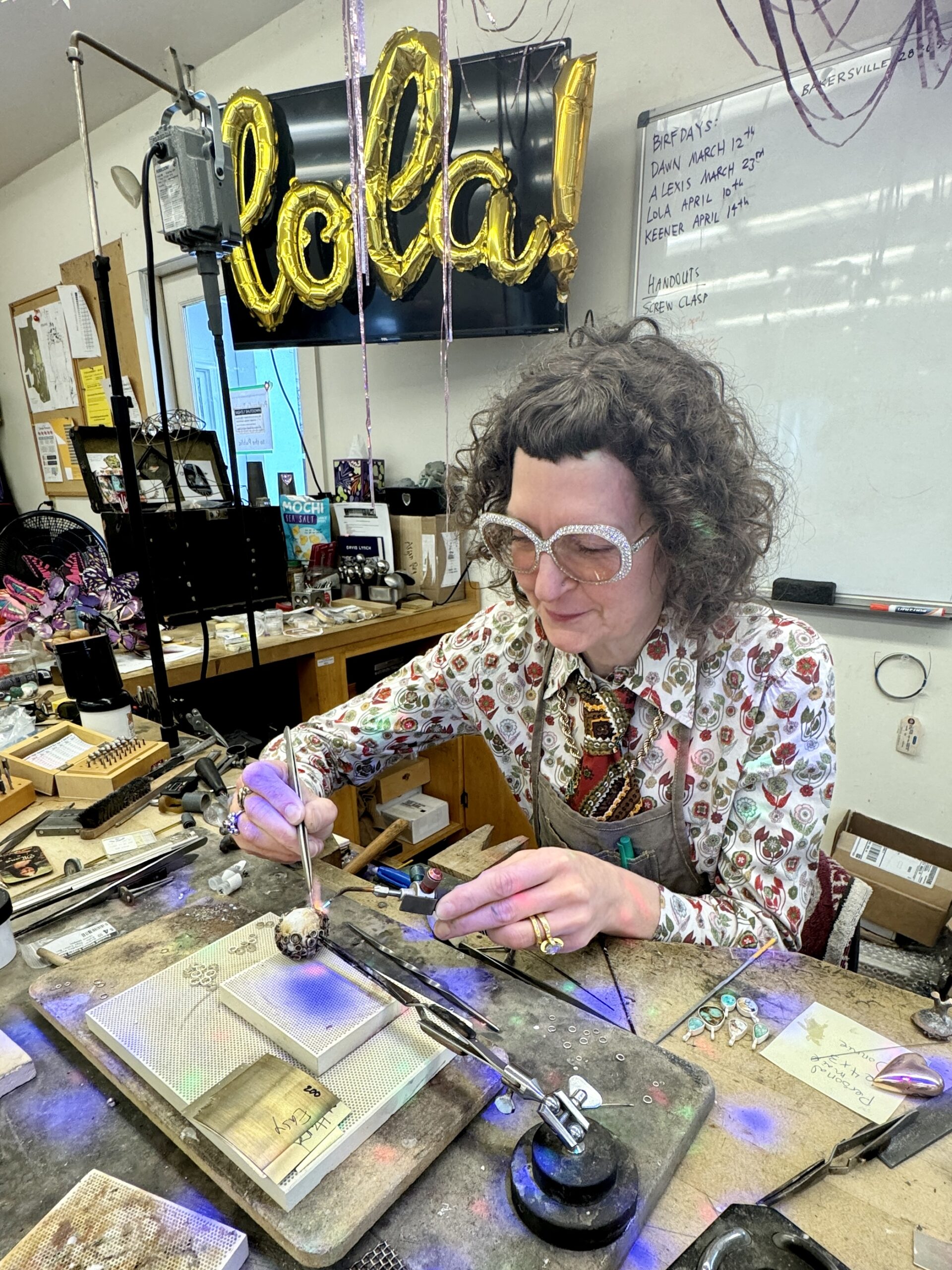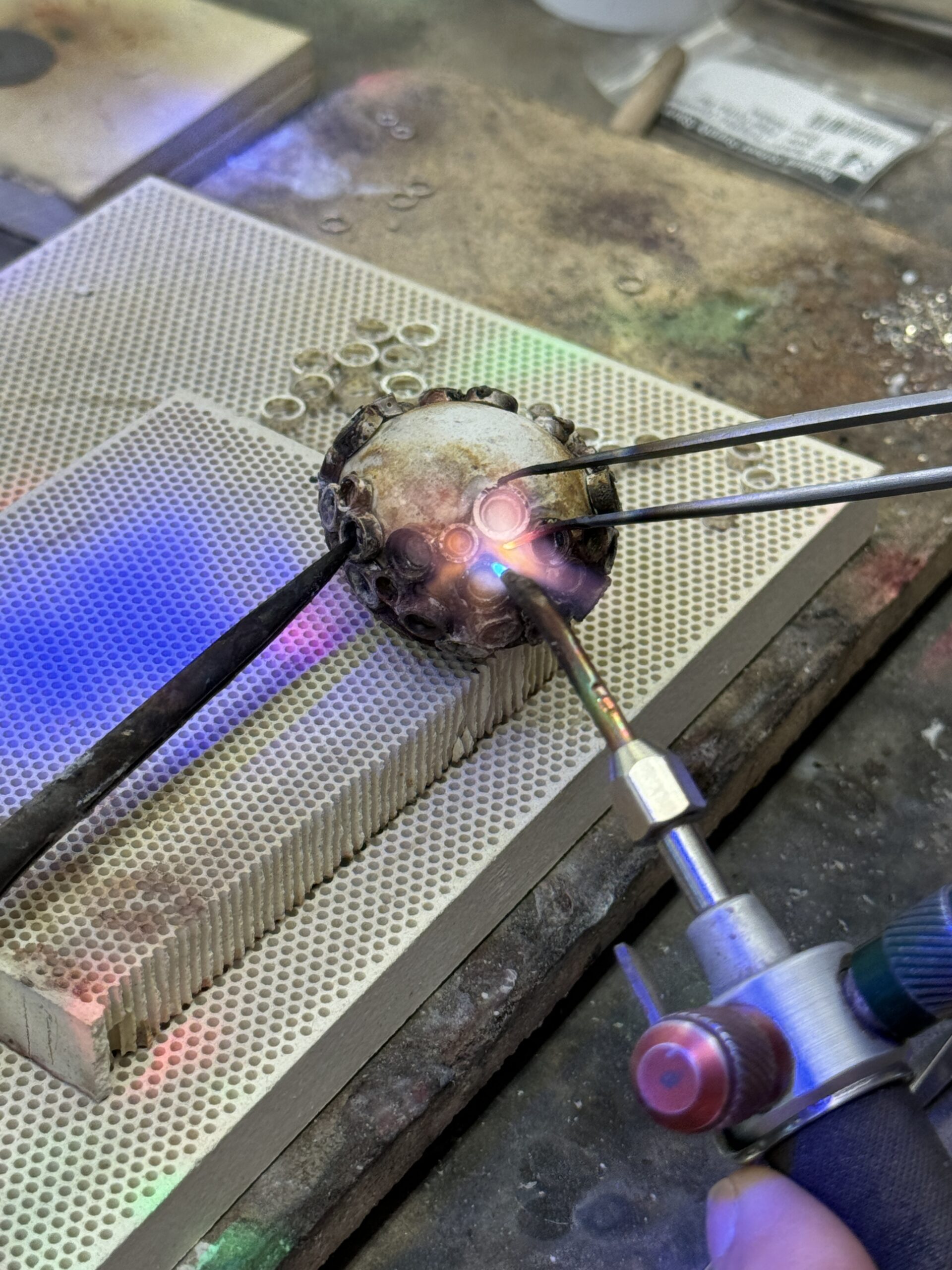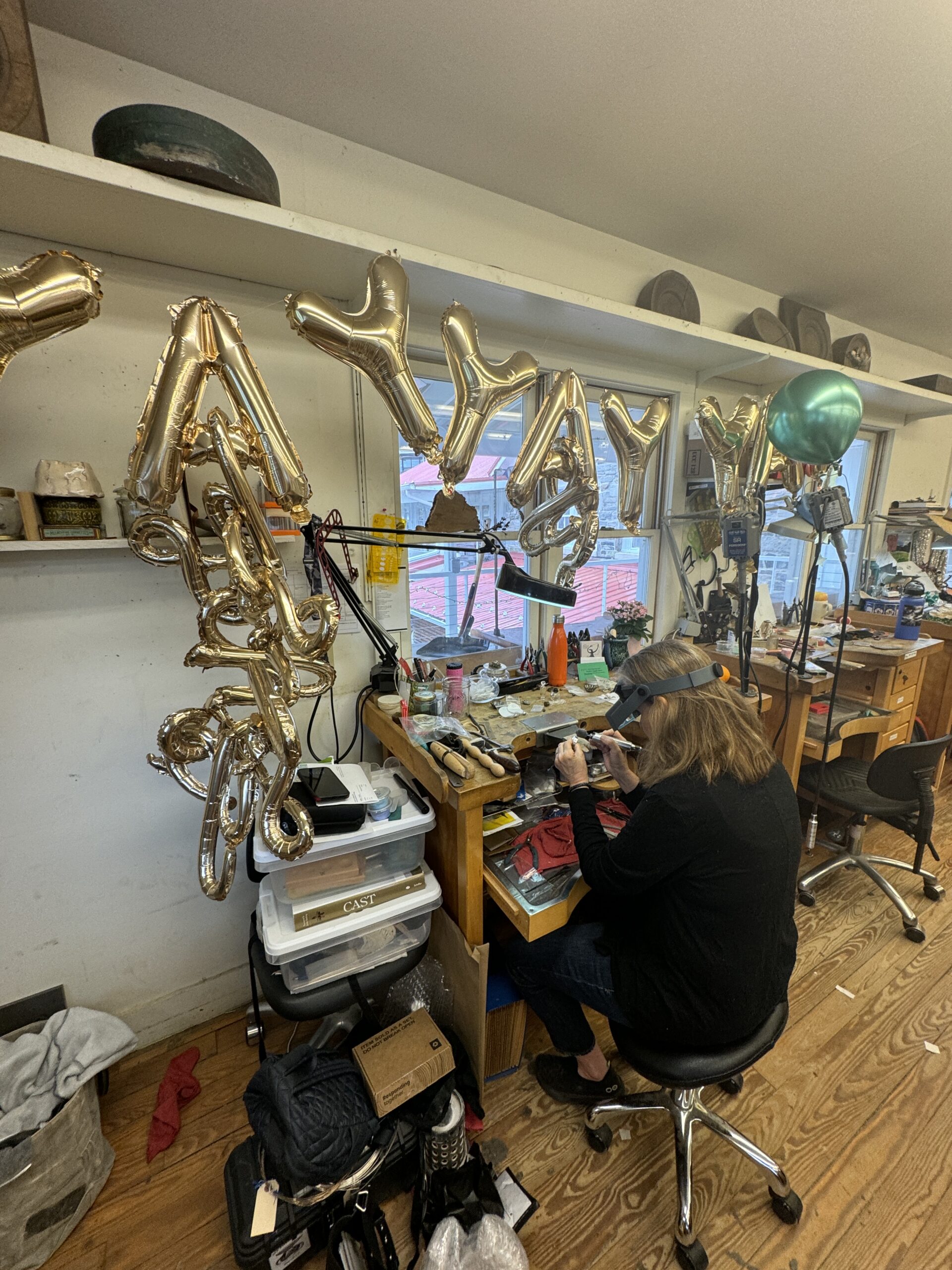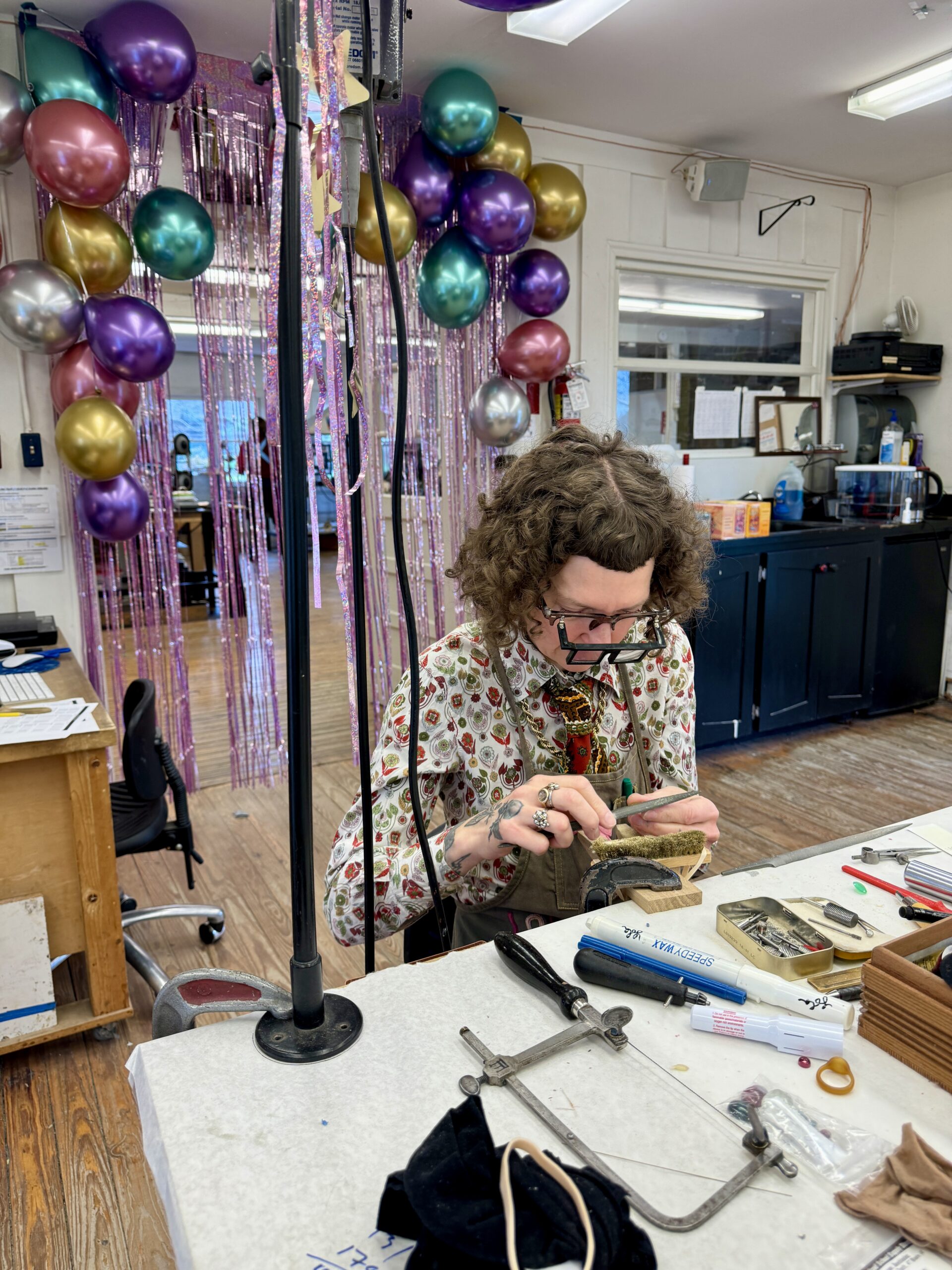 Anna Koplik and studio assistant Sean Fitzsimmons
Anna Koplik and studio assistant Sean Fitzsimmons
This spring, we had the special opportunity to spend eight weeks making tools with Anna R. Koplik. Her Tongs, Hammer, and Other Slammers workshop was a deep dive into the self-sufficient nature of blacksmithing. Each tool created by students aided in the creation of the next as students developed and enhanced their forging skills.
We checked in with Anna R. Koplik to attempt the impossible; summarizing eight transformative weeks.
 Posing with the power hammers
Posing with the power hammers
Here’s our interview with Anna:
Congratulations on such a successful workshop, Anna! Can you tell us why is this the workshop you most wanted to teach?
Thanks! It was such a wonderful and heartwarming experience. I wanted to teach a toolmaking workshop first and foremost because I just love making tools and hoped that there would be other people who geeked out as much about toolmaking as I do.
Toolmaking is something that can be incredibly empowering for people to learn. It sets you up to be able to make whatever you want and removes a lot of barriers, namely what tools you may or may not have access to. The confidence I see my students (and myself) gain when they make and use their first pair of tongs or hammer, is inspiring and something that I want to pass along to others whenever possible.

What are some of the toolmaking demos you performed and the skills they covered?
We started with the basics by making punches, chisels, and drifts. This taught hammer control, clean forging from square to octagon to round, tapering, grinding, and heat treating. We then used these tools to make BBQ forks, where we went over hot cutting, punching and drifting, necking down, tapering on the power hammer, and techniques to create different design elements for a handle.
From there we spent a good bit of time focusing on tongs where students learned more about shouldering and making parts that match and fit together, riveting parts together. Then students were able to use their own tongs to make more work, which is always such a fun moment!
We also went over forging bending forks to learn about mass calculation and how to look at a finished forging and work backwards to figure out what it started as and how it was made. Then we used those bending forks to bend curves and scrolls and learned to MIG weld together a jig to be able to duplicate forms.
Next, we went over making the tooling for making hammers. We then used these tools to make our own hammers. These different projects focused a lot on improving control in power hammer forging, working with top tools and a striker, and punching holes in bigger material.
Everyone started off using the shop tools and slowly started making their own tools to essentially replace them. They all finished class with some version of a basic blacksmith hand tool set up. However one of the focuses of the class was to not only make tools, but also to understand how to use those tools to make more work.
 Demo pieces created by instructor Anna R. Koplik
Demo pieces created by instructor Anna R. Koplik
 C. Murphy, nail header and hammer
C. Murphy, nail header and hammer
 Tools created by C. Murphy
Tools created by C. Murphy
 Tools created by Sarah K., including THE Hot Dog Fork
Tools created by Sarah K., including THE Hot Dog Fork
What else did folks make?
Throughout class, students were encouraged to explore other work they were interested in. The “final project” of class was open ended but was required to have some element of toolmaking. So I had people who made architectural work, utensils, and sculptures, but they all made whatever special tools were needed to accomplish making their piece. For example, Dan Hakman made a candelabra, but in order to do so he had to make a square punch, a jig for the legs, and bending forks.
 Tools and mirror created by Nina Yao
Tools and mirror created by Nina Yao
Who improved the most?
I don’t think that’s a question I can honestly answer. Every one of my students improved in some way. I had many beginner students who had never picked up a hammer or worked with hot steel before this class and by the end they were comfortable swinging a hammer and understood how hot metal moved. I had other students who had years of experience in blacksmithing, but during class were able to get out of their comfort zones with new techniques, were pushed to focus more on design, or learned how to be more efficient in their forgings.
For example, Nina Yao came into class with 2 years of blacksmithing experience, an amazing eye for design, and knowledge of a lot of traditional forging techniques, but not much experience with electric welding or mechanical connections. On the opposite end, Frizz (Jeff) had been doing blacksmithing for years on his own and had worked as a machinist for decades. He’s a great problem solver and knows how to use many different areas of metalworking but has less experience with traditional forging techniques.
Throughout class, and especially in their final projects, they both had to get out of their comfort zones: Nina with using electric welding and mechanical connections to create an amazing mirror frame, and Frizz with using a cross peen to spread and texture metal, and forge welding to connect components to make a beautiful floral sculpture.
What’s something you learned from your students during these eight weeks?
I’m not sure if I’ve fully processed everything I’ve learned during the 8 weeks. I think one of the biggest things I learned was how much my students ultimately were supporting me just as much as I was supporting them. I was also reminded how much everyone’s success was tied to the whole community. It wasn’t just about one person making something they were proud of, but about everyone sharing their triumphs and struggles and fears as a group and then helping each other along.
What would you say to someone who is thinking about working in iron?
Do it! I feel like often working in iron can seem very intimidating, especially for women or queer people. It all can seem big and loud and like there’s no way you can find a space to be a part of it. I know I felt that way when I first started and still have my days where I’m not sure where my place is. But ultimately, you can make the craft your own and it can be such an empowering medium to work in. Everyone is capable of working in iron if they want to and I hope more people give it a try and feel empowered to take up space in this craft and shape its future.
 Dan Hakman forging on the power hammer with studio assistant Sean Fitzsimmons cheering him on
Dan Hakman forging on the power hammer with studio assistant Sean Fitzsimmons cheering him on
Thank you, Anna! This was such a wonderful workshop. We feel so fortunate to have been able to spend this time with you in the Penland iron studio!
Students used their newly-created tools to make all of this:
 Penland Core Fellow Mia Donalson, sculptural air vent grate.
Penland Core Fellow Mia Donalson, sculptural air vent grate.
 Jeff, chair frame.
Jeff, chair frame.
 Jeff (aka Frizz), floral-inspired sculpture
Jeff (aka Frizz), floral-inspired sculpture
 Art Sword, studio assistant Sean Fitzsimmons
Art Sword, studio assistant Sean Fitzsimmons
 Sarah C., Woven dog gate (steel, copper, leather).
Sarah C., Woven dog gate (steel, copper, leather).
 Dan Hakman, candelabra and hammers
Dan Hakman, candelabra and hammers
 Nina Yao, yonic inspired mirror frame
Nina Yao, yonic inspired mirror frame
Anna R. Koplik
Journeyman architectural blacksmith, tool and utensil maker; teaching: Penland, Touchstone (PA), Peters Valley (NJ), Haystack (ME), Center for Metal Arts (PA), Campbell Folk School (NC), Desert Metal Craft (AZ), Brookfield (CT), She-Weld (NY), Dragons Breath Forge (CT); recent exhibition: Penland Gallery.
Want to experience working with iron at Penland? Check out our current workshop offerings HERE.



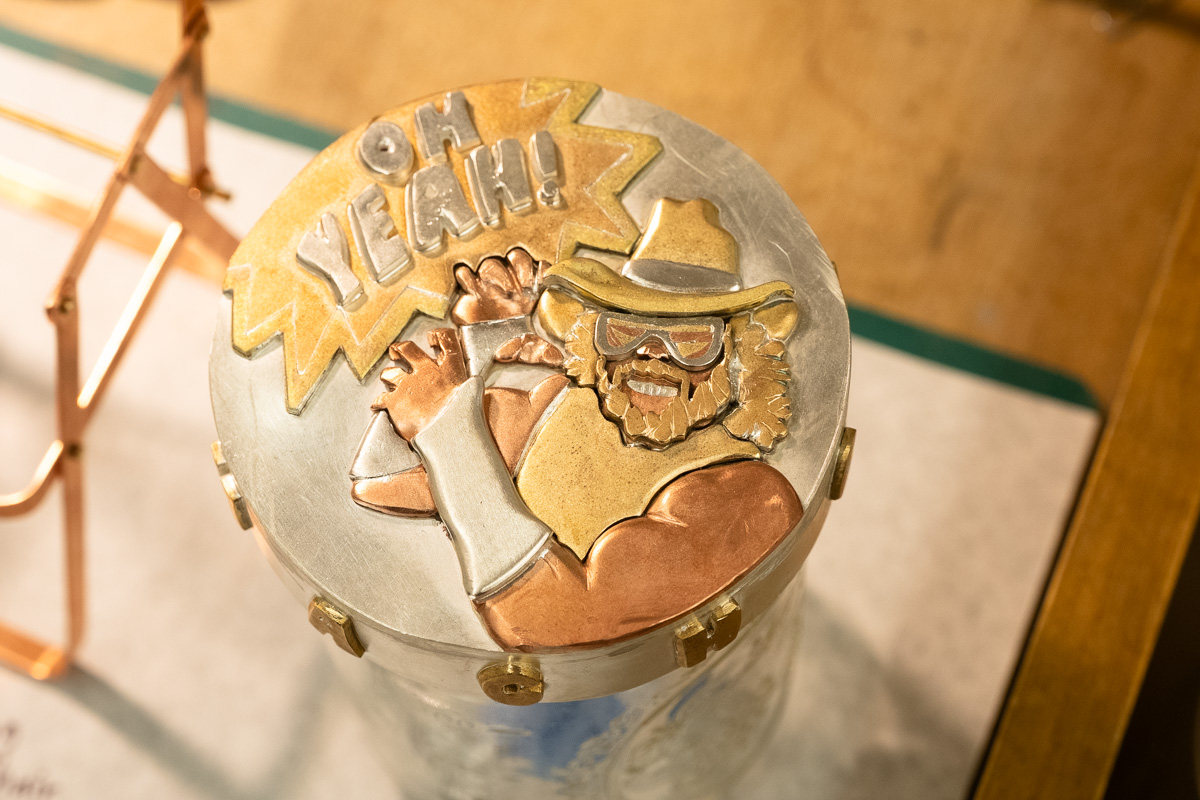 Macho Man Randy Savage Ball jar lid by Laura Fortune
Macho Man Randy Savage Ball jar lid by Laura Fortune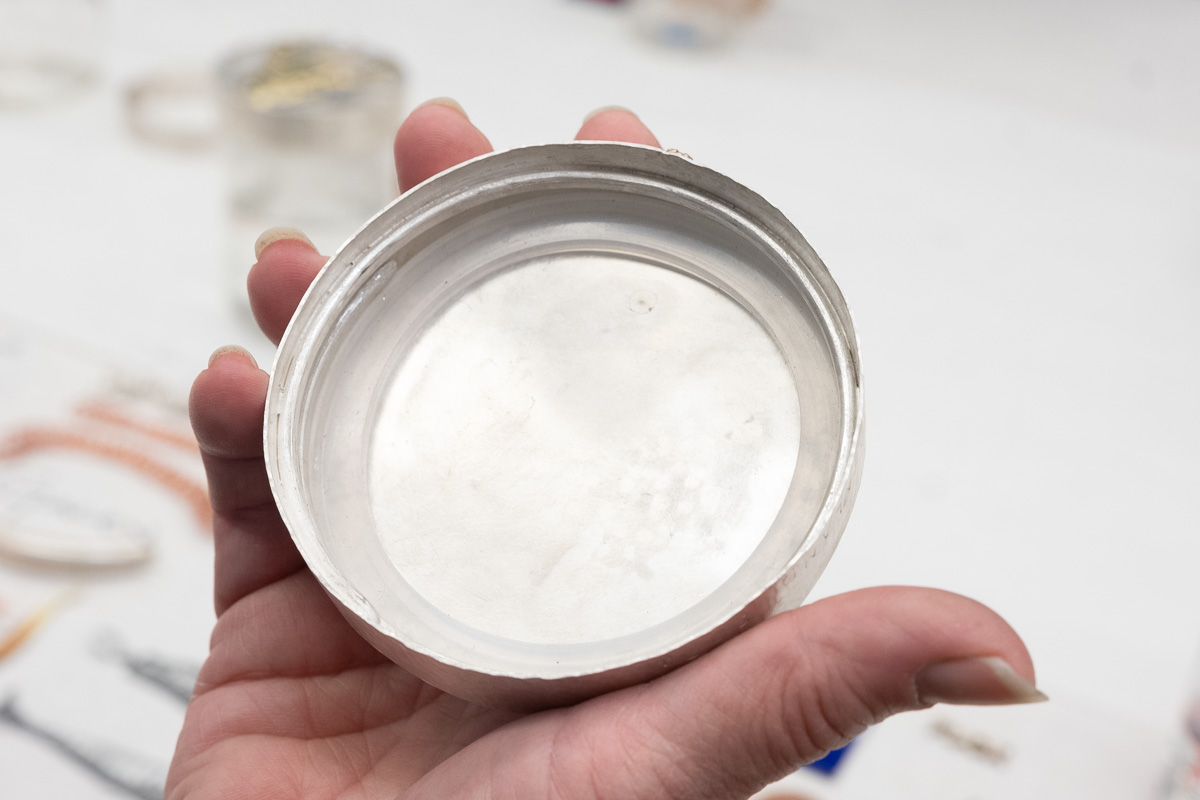 The handmade screw mechanism of the jar is a challenge to create
The handmade screw mechanism of the jar is a challenge to create







